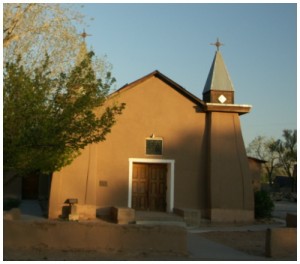Read an excerpt from this article below. You can download the full article by using the link at the end of the excerpt.
We invited our readers to tell us about their home town, how their planning commission functions, and what they see as their major challenges. Brief reports from planners and planning commissioners in seven quite different communities.
Excerpt covers one of the communities featured:

Corrales, New Mexico
report from Planning & Zoning Administrator Cynthia Tidwell
The Village of Corrales is just north of Albuquerque, bounded by the Rio Grande, and across the river from Sandia Pueblo. There were Pueblo Indians here since about 700 AD. In 1706, a Spanish land grant was given to a soldier of the “Reconquest of 1692.” In 1712, that land grant was passed to another soldier, Juan Gonzales Bas – considered the founder of Corrales.
Incorporated in 1972, the Village now has a population of about 9,000. The municipal area is some ten square miles, including a nature preserve along the west bank of the Rio Grande.
Nearing Build-Out
The Village is nearing buildout, so we no longer review/approve large subdivisions. Most of what we’re doing now are lot splits or small land divisions of under ten acres (one acre minimum). However, we are spending more time on code revisions, updating land use codes that were first adopted in 1989. One interesting note: all residential and commercial land in the Village is zoned to include farming, as well as livestock raising and management – reflecting the hundreds of years of ditch irrigation here in the valley.
Planning Commission
The commission enjoys hands-on regulation writing (we do not have the money to hire consultants) and are very much engaged in the process.
We are also paying much closer attention to commercial site development plan review and approvals. Our standards have been raised, and the work of the commission is focused on implementation of high quality site plans.
The commission has also turned its attention to historic preservation regulations and incentives in the commercial core of the Village, with hopes of achieving a New Mexico Arts and Culture District designation through its MainStreet program.
About six years ago the commission tightened up its “Rules for the Conduct of Business” – rules that delineate the order of business, the requirements for submittals, appeal process, public notice, “open meetings act,” who may speak and for how long, and so forth. Applications for all zoning actions are not scheduled for a hearing until every element is complete. The commission also imposed a 10:00 pm adjournment time that is rarely exceeded. Developers and the public very much appreciate the more rational approach to review and action.
Challenges Ahead
Here in the arid High Desert west, water has already become the issue of the 21st century. We are returning to a more historic, dry, and unpredictable climate.
Having enough water for residential and commercial uses will become a terrific tug of war, with all the players battling everyone else. Native Americans have “first rights, from time immemorial” – but have always shared in times of drought. They have their own development goals, and when it gets really dry, they may not want to share with others.

The drought is already impacting farming and livestock throughout New Mexico. Here in the Village we are trying to keep our farmers in business, and encourage small plot gardeners to utilize irrigation water from ditches that have been in existence for hundreds of years.
End of excerpt
Other communities featured in article: Ephraim, Utah; Westlake, Ohio; Aurora, Illinois; Leesburg, Florida; New Kent County, Virginia; and Shelburne, Vermont.
You must be logged in or a PlannersWeb member to download this PDF.